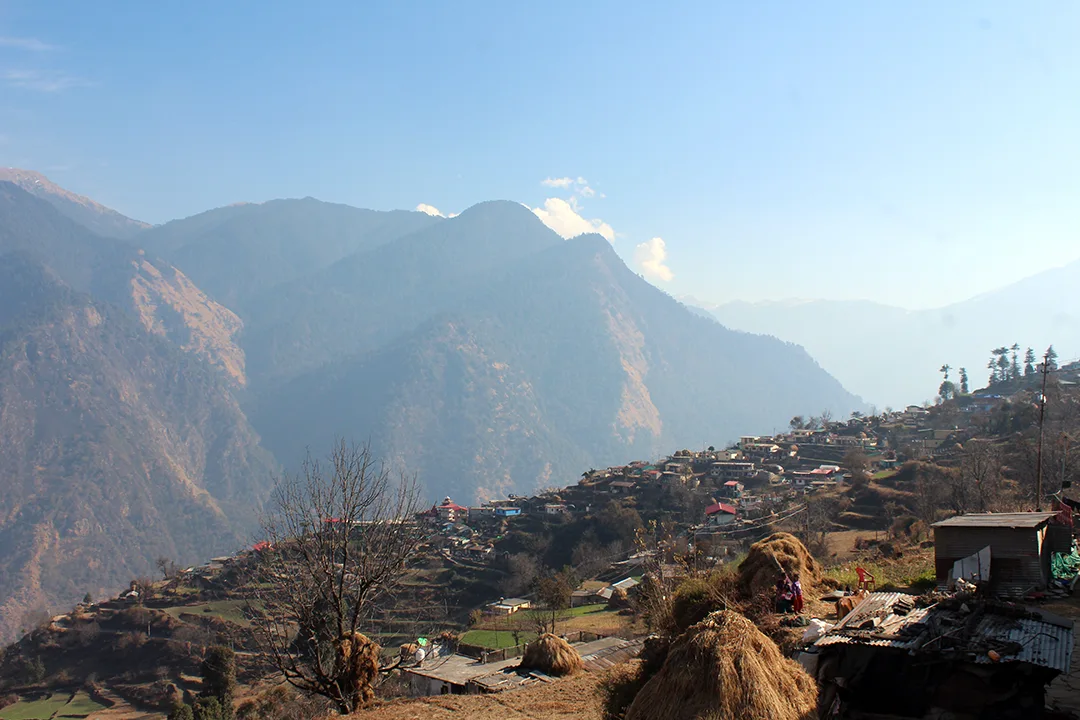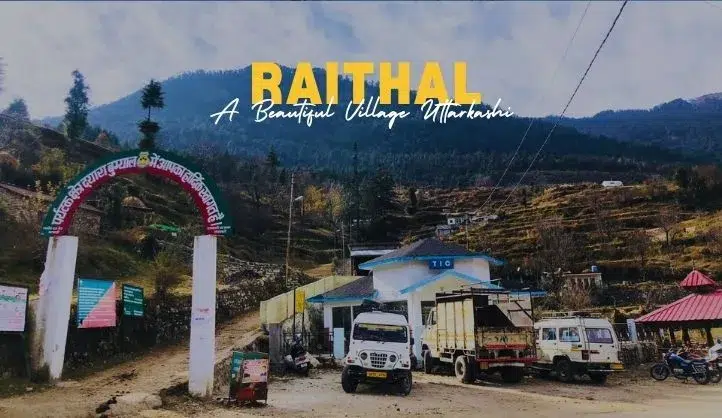Raithal Village
Published on August 23, 2025
Raithal is a small, quiet village nestled in the Uttarkashi district of Uttarakhand, India. It's not a major city but a charming, traditional settlement that serves as a vital starting point for many treks, most notably the famous Dayara Bugyal trek. To truly appreciate Raithal, you have to look beyond its simple appearance and understand its history, its culture, and its deep connection to the mountains that surround it.
The Origin Story: The Roots of a Mountain Village
The history of Raithal is not written in old books, but it is passed down through generations of families and is deeply connected to the land itself. The village’s origin is a story of human settlement in a harsh but beautiful environment.
A Story of Ancient Settlers: It is believed that Raithal was settled centuries ago by people who migrated into the Garhwal region. They were likely looking for fertile land, safe places to live, and a source of livelihood. The area around Raithal provided these things. The village sits at an altitude of about 7,300 feet, which is high enough to be away from the hot climate of the plains but low enough to allow for farming. The surrounding oak and pine forests provided wood for building and fuel, while the clear mountain streams offered a constant supply of fresh water. These early settlers built their homes from locally sourced timber and stone, a tradition that continues to this day. This is why you can still see the unique, traditional Kath-Kuni architecture in Raithal, with its beautiful alternating layers of wood and stone. This style of building is not just for looks; it makes the houses strong enough to withstand earthquakes and harsh winters.
A Community Built on Farming: The village’s name, "Raithal," likely has roots in the local language, possibly referring to the rich soil or the terraced fields that are a defining feature of the area. For centuries, the people of Raithal have been farmers, cultivating crops like rice, wheat, and millets on terraced slopes. They developed special farming techniques to manage the steep terrain and the seasonal climate. This agricultural heritage is the backbone of the village’s identity and has shaped its entire way of life. The village's history is a story of hard work, self-reliance, and a deep respect for the land.

Raithal's Role in a Living Culture
Raithal is not just a place where people live; it’s a living part of the rich cultural tapestry of the Garhwal region. The village's traditions and beliefs are closely tied to the mountains and the cycles of nature.
The Role of Religion and Faith: The people of Raithal are deeply religious, with their faith centered on local deities and ancient gods. There is a small, old temple in the village dedicated to a local deity, which serves as a center for community life. Festivals and rituals are a big part of the year, celebrating everything from the harvest to the changing seasons. The community comes together for these events, strengthening the bonds between families and neighbors. This shared faith gives the village a strong sense of unity and purpose.
A Gateway to Treks: In recent years, Raithal has become a popular base for trekkers. It's often the starting point for the Dayara Bugyal trek, as well as other trails. For many trekkers, Raithal is their first real experience of a traditional Himalayan village. They are often welcomed by the locals with warmth and hospitality. The villagers, who have long been guides and porters, understand the needs of trekkers and have helped the village develop as a trekking hub. This new role has added a layer to Raithal's history, connecting its past as a quiet farming village with its present as a gateway to adventure.
The Traditional Architecture: One of the most unique aspects of Raithal is its traditional architecture. The old houses are made from local wood and slate stones, stacked together in a way that is both beautiful and functional. These buildings are a direct link to the village's past, showing the wisdom of its early builders. Walking through the narrow paths and looking at these homes feels like stepping back in time. Preserving this architecture is important for keeping Raithal's identity alive.

Raithal Today: A Bridge Between Past and Present
Today, Raithal is a place where old traditions meet new opportunities. While the core of the village remains tied to farming and mountain life, it has also embraced its role in the tourism industry.
A Community Adapting to Change: The growing number of trekkers and visitors has brought new life to the village. Locals have started guesthouses and small shops, offering a chance for them to earn a living without leaving their homes. This has helped the village to survive and thrive. However, this change is managed carefully. The people of Raithal are proud of their traditions and are determined to preserve their simple, peaceful way of life.
A Lesson in Simplicity: For visitors, Raithal offers a unique lesson in simplicity and a close connection to nature. The sound of a nearby stream, the sight of terraced fields, and the smell of wood smoke from the chimneys create a truly peaceful atmosphere. It is a place where you can disconnect from the fast pace of city life and reconnect with the quiet beauty of the Himalayas.
In conclusion, Raithal is much more than just a name on a map. It's a place with a quiet but deep history, built on the hard work of its early settlers and shaped by its unique location. It stands as a living example of how a community can survive for centuries in the mountains, holding onto its traditions while also adapting to the future. It's a true gateway to the Himalayas, in every sense of the word.
